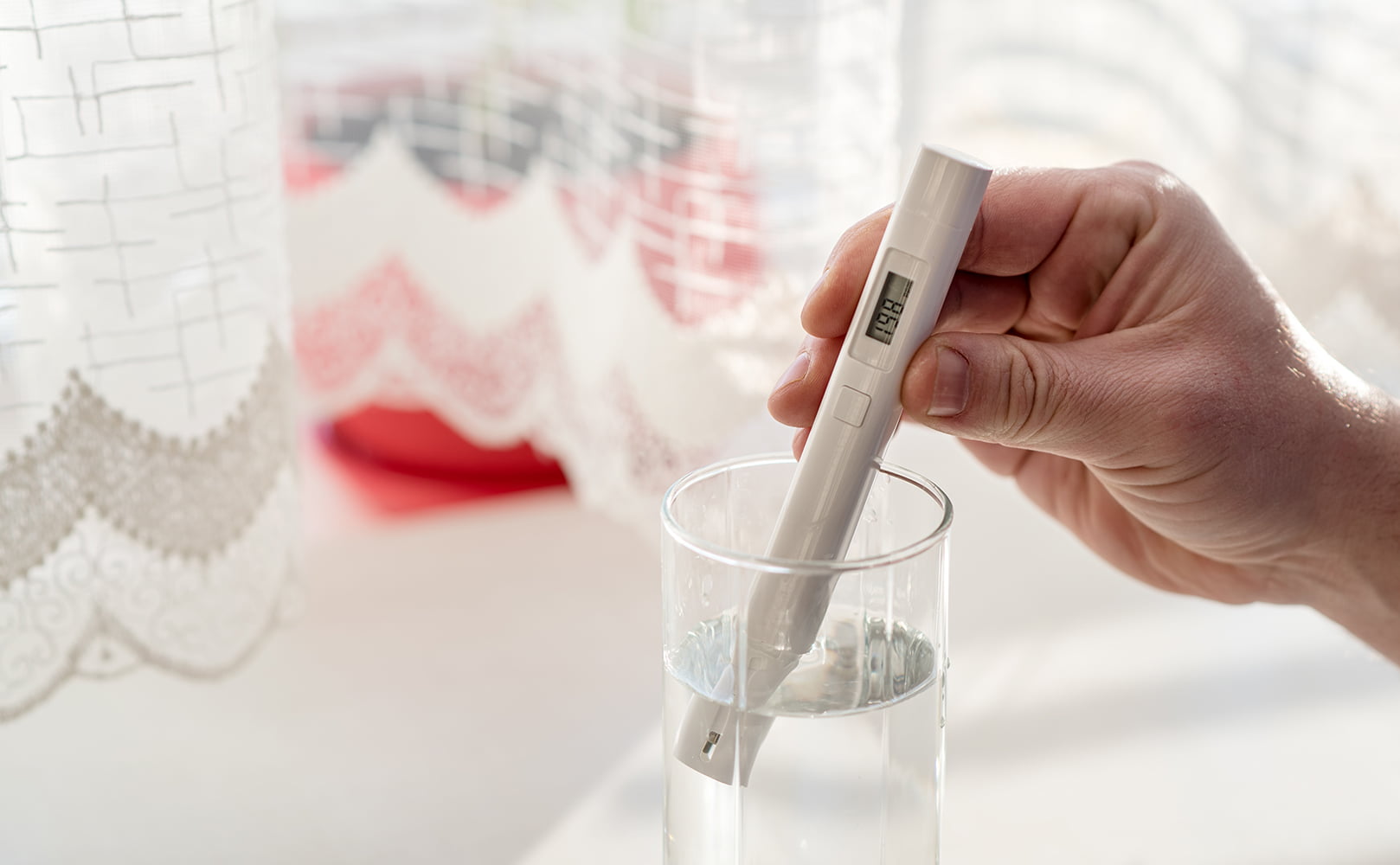RO TDS Rejection Calculator (+ Formula)
Written by: Gene Fitzgerald // Last Updated: Aug 25, 2023
This page may contain affiliate links. If you buy a product or service through such a link we earn a commission at no extra cost to you. Learn more.
TDS rejection percentage in a reverse osmosis system is a key indicator of the effectiveness of your RO membrane.
A high percentage value means that your RO membrane is doing its job and filtering out nasties, whereas a value lower than 80% might mean it’s time to change the RO membrane.
How can you figure out that percentage? By using our handy RO TDS rejection calculator!
How to Measure TDS in Water Correctly
Here’s the step-by-step process to obtain the readings for this calculator:
- Rinse the tip of your TDS meter and a small cup or glass with RO water.
- Turn on your non-RO faucet and let it run for a few seconds.
- Collect a sample of the running water in the rinsed cup or glass.
- Measure the TDS of the collected water using your TDS meter and record the result for the calculator.
- Rinse the cup and meter again with RO water.
- Collect a sample of the RO water.
- Measure the TDS of the RO water using your TDS meter and record the result for the calculator.
- Input the two values in the relevant sections in the TDS calculator to determine your rejection rate.
What Are the Benefits of Using a TDS Rejection Calculator?
Aside from the calculator saving you from having to do mathematical equations, you can know when to replace the RO membrane and filters by calculating the salt rejection rate of your reverse osmosis system.
The rejection rate refers to the extent to which the semipermeable membrane in your reverse osmosis system eliminate TDS. For instance, a 99% rejection rate indicates that the water produced by your RO system has 99% fewer TDS than the incoming water. Anything 80% or lower means that the membrane needs to be changed.
RO TDS Rejection Calculation Formula
Prefer to do the calculation by hand?
- Start by testing the TDS of the untreated water sample.
- Next, test the TDS of the purified RO water sample.
- Calculate the TDS rejection rate using the following formula: Rejection rate % = (TDS of untreated water – TDS of purified RO water) / TDS of untreated water x 100
If the calculated rejection rate is below 80 percent, the membrane’s performance is decreasing.
When Should You Change Your Reverse Osmosis Membrane?
It is recommended to replace a reverse osmosis membrane every 2-5 years or as per the manufacturer’s instructions. However, if the salt rejection rate falls below 80%, it indicates a need for membrane replacement, even if it is earlier than expected, as it is no longer effectively removing dissolved solids.
Some other indicators that it may be time for an RO membrane change include unpleasant tastes and odors in the water, reduced water flow, or continuous system drainage.
If you have any questions about our RO TDS rejection calculator please don’t hesitate to leave a comment below!
Information provided on BOS is for educational purposes only. The products and services we review may not be right for your individual circumstances.
We adhere to strict editorial guidelines. Rest assured, the opinions expressed have not been provided, reviewed, or otherwise endorsed by our partners – they are unbiased, independent, and the author’s alone. Our licensed experts fact-check all content for accuracy. It is accurate as of the date posted and to the best of our knowledge.


